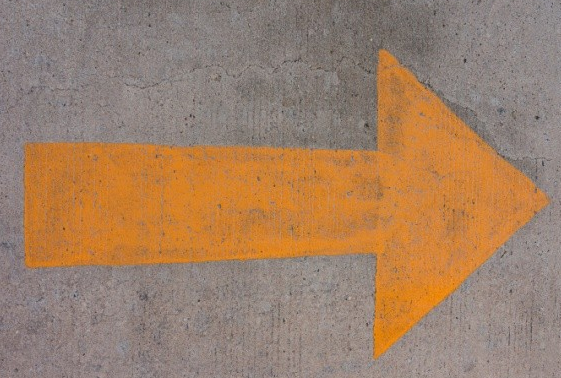(单词翻译:单击)
We're surrounded by symbols that we seem to instinctively understand but rarely question where they originally came from. Often, the history of common symbols is more convoluted than we might think.
周围的许多标志,我们看到就能理解,但很少深究这些标志从何而来。其实有些常见的标志,来历比我们想象的复杂多了。
10.Heart Symbol
10.心形标志
The heart symbol shape has been found in Cro-Magnon pictograms from the last ice age, but it probably didn't gain its modern meaning until the Middle Ages.
心形标志最早出现于第四纪冰川时期克鲁马努人的象形图,但直到中世纪才形成现有含义。
Some contend that it was based on the seedpod of the silphium plant, a North African plant that was a popular form of birth control until it went extinct.
一些人认为,这个标志源于串叶松香草的心皮,串叶松香草原产于北非,常用作避孕,后绝种。
The city-state of Cyrene even minted coins with the image of the seedpod, which closely resembled the heart shape. This may have helped associate the image with sex and love.
北非古城昔兰尼还把松香草的心皮图案印在钱币上,看起来很像心脏的形状,这也许可以解释心形为何与性和爱相关。

Others claim a more divine inspiration, holding the modern heart symbol as descended from the medieval symbol of the Sacred Heart, which represented the sacrifice of Jesus Christ and was often shown covered in wounds.
还有人认为心形标志来源更为神圣,称现在的心形源于中世纪的耶稣圣心标志,象征耶稣的牺牲,经常出现在伤口。
The Catholic Church teaches that the symbol was revealed in a vision to Saint Margaret Mary Alocoque in the 17th century, where it appeared surrounded by thorns. Historians point out that the symbol was known and used much earlier than the 1600s.
天主教的说法是,17世纪上帝显像给圣女玛加利大·玛丽·亚拉高,给她看带有茨冠的圣心。而历史学家指出,心形标志在17世纪前就已经为人所知并加以使用了。
Still others believe that the symbol was based on ill-conceived notions of the human heart, which they saw as an organ with three chambers, a round top, and a pointy bottom. It was believed to hold human passions.
还有人认为心形就是源于对人体心脏器官的拙劣构想,心脏有三个腔室,顶端呈圆形,底部为尖,人的感情便受此控制。
Attempts to draw this notion of the heart may have become widespread in medieval iconography and paintings, only to be later co-opted by the emergence of Valentine's Day in 17th-century England.
中世纪时肖像和绘画中心形极为普遍,17世纪英国出现情人节,心形标志发扬光大。
9.Dollar Sign
9.美元符号
What is almost universally recognized as the dollar sign was actually a sign for the peso.
现今世人公认的美元符号起初为比索的符号。
The domination of ore mining in Central and South America allowed the Spanish peso de ocho to become a truly international currency. It supplanted the older Bohemian thaler coins in popularity, although that coin influenced the development of other Germanic words for heavy silver coins, such as the Slovenian "taler," Dutch daalder, and the English word "dollar."
在比索之前,世界流通的货币为波西米亚泰勒币,因此,还产生了许多用来称呼较重银币的日耳曼语系单词,比如斯洛文尼亚语taler,荷兰语daalder以及英语dollar。后来,西班牙控制了中南美洲的矿业,西班牙银元成为全球通用货币。
However, the Spanish peso was what ended up adopted into trade in Europe, the Americas, and the Far East.
然而,西班牙比索最后用于欧洲、美洲和远东贸易。

Merchants substituted the word "pesos" with the abbreviation "Ps," the letters of which were later written superimposed on top of one another.
商人将"pesos"简写为"Ps",后又将这两个字母叠加。
By the 1770s, the shorthand form of the old "PS" abbreviation was written as "$," which was then adopted by the new United States to symbolize their currency.
到18世纪70年代,"PS"缩写已被"$"取代,也被美国用来表示美元。
There are a number of other proposed theories about the origin of the dollar sign. Ayn Rand claimed that it was a superimposition of the letters "U" and "S" and was also a symbol for the nation, a free economy, and a free mind.
美元符号的由来,还有另外几个版本。艾茵·兰德称,$是字母U和字母S叠加而成的,代表美国、自由的经济和自由的思想。
Others say it was linked to the monogram used by the rich Potosi silver mines, "PTSI." Still others claim it was linked to the Portuguese cifrao symbol, the British shilling, or to the Spanish words for "slave" and "nail."
其他人称,美元符号来自于丰富的波托西银矿"PTSI"。还有人称,"$"源自葡萄牙货币符号、英国先令或表示西班牙语里的"奴隶"和"钉子"。
8.Arrow Symbol
8.箭头
The use of the arrow symbol to denote direction was preceded by the ancient Greek footprint and the medieval pointing finger.
用箭头表示方向源于古希腊的脚印和中世纪的手指指向。
The former can be seen in the ancient Greek city of Ephesus, where a footprint and a woman's face carved into the pavement signify the direction to a local brothel.
古希腊城市以弗所中可见脚印指向,人们将脚印和女人的脸刻在地面上指明妓院的方向。
The extended finger was used in medieval signage and early printed texts, where they were sometimes referred to as printer's fists, pointers, or manicules. These are believed by some to trace back to the 12th century, becoming popular in Italy in the 14th and 15th centuries.
中世纪标识及早期印刷文本中使用"箭头"表示指示标或读者标记重要内容的标志。一些人认为这些始于12世纪,14和15世纪时在意大利非常流行。

The arrow was not adopted as a form of pictorial instruction until the 18th century, and even then, early arrows retained a visible arrowhead and shaft.
直到18世纪,箭头才被用作图形指示物,当时的箭头标志也是一个箭头加一个箭杆。
They first appeared in engineering treatises and cartographic maps showing the flow of rivers. The arrows' fletching wasn't lost until the 19th century, when the symbolized arrow began to appear on maps. The stylized arrowhead gave way to more abstract triangles or oblique lines meeting in a point.
箭头标志最初用于工程论文和制图中,表示河流的流向。19世纪时,箭杆上的箭翎消失,图纸中的箭头符号符号化,之后传统的箭头又演化为抽象的三角和斜线交汇。
By the 20th century, the arrow had became an entirely abstract symbol with its incorporation into logic and math sets.
到20世纪时,箭头标志已经完全抽象化,应用于逻辑和数学领域。


